


We offer clients the option to select an experienced provider when deciding where to place their ETF assets. For decades, across BNY Mellon we have managed or serviced hundreds of billions of dollars in ETF assets – acting as custodian, facilitators, brokers and advisors. BNY Mellon has a suite of ETF capabilities covering asset servicing, securities lending, capital market services, brokerage and clearing services.
Discover our ETFs.
Combining the size, scale, capabilities, experience and expertise at BNY Mellon enables us to offer a high quality ETF product range while maintaining value for clients.
Our range of index ETFs can be used as ‘building blocks’ in an investor’s portfolio, either as part of a multi-asset solution or a more holistic investment strategy.
Our next phase of ETF product development involves harnessing the specialist capabilities of our investment firms to deliver actively-managed ETF solutions to a broader range of clients.
Introducing
BNY Mellon Innovators ETF (BKIV) and
BNY Mellon Women’s Opportunities ETF (BKWO)
OUR ETFS
Benchmark: Solactive GBS United States 500 Index TR
A fund focused on US large-cap equities, capturing the top 70 percent of stocks by market capitalization2
Benchmark: Solactive GBS United States 600 Index TR
A fund focused on US small-cap equities, capturing stocks that range between the 90th-97th percentile by market capitalization2
Benchmark: Solactive GBS United States 400 Index TR
A fund focused on US mid-cap equities, capturing stocks that range between the 70th-90th percentile by market capitalization2
Benchmark: Solactive GBS Developed Markets ex United States Large & Mid Cap Index NTR
A fund focused on international developed equities, capturing the top 70 percent of stocks in the universe by market capitalization2
BENCHMARK: Solactive GBS Developed Markets ex United States Large & Mid Cap Index NTR
A fund focused on emerging market equities, capturing the top 70 percent of stocks in the universe by market capitalization2
BENCHMARK: BLOOMBERG US
AGGREGATE TOTAL RETURN INDEX
A broad-based benchmark fund focused on tracking the US Bond Market.
BENCHMARK: BLOOMBERG US
CORPORATE HIGH YIELD TOTAL RETURN INDEX
A fund tracking the high yield, fixed-rate corporate bond market.
1 ETF tax efficiency can be derived from certain structural elements including: turnover in passive strategies is typically lower than that in active; and there can be structural tax benefits from in-kind redemptions. When assets are delivered from the ETF via an in-kind transfer, no capital gains are realized. This can allow investors more control over the timing of their tax liabilities based on when they generally sell their position. Please consult your own tax advisor or financial professional for more detailed information on tax issues as they relate to your specific situation.
2 As tracked by Morningstar and subject to exclusions. On or about November 15, 2023 the benchmark provider for these funds will change from Morningstar to Solactive GBS. Please see further information in disclosures at bottom.
3 Fee represents the Total Expense Ratio as stated in the prospectus. The Total Expense Ratio is the actual fund expense ratio applicable to investors.
4 The fund is not a money market fund and is not subject to the liquidity requirements and investment and credit quality restrictions applicable to money market funds. There can be no guarantee that the fund will generate higher returns than money market funds.
Benchmark: S&P Global Infrastructure Index
A fund focused on total return that seeks to deliver quarterly income while providing exposure to traditional and nontraditional infrastructure stocks globally
BENCHMARK: ICE BANK OF AMERICA US Corporate Index
A fund that primarily invests in corporate debt securities issued by companies that demonstrate attractive investment attributes and attractive business practices based on an environmental, social and governance (ESG) evaluation methodology2
BENCHMARK: S&P 500 INDEX
A fund focused on capital appreciation that invests primarily in U.S. stocks that demonstrate sustainable business practices
BENCHMARK: MSCI EAFE INDEX
A fund focused on capital appreciation that invests primarily in foreign stocks that demonstrate sustainable business practices
BENCHMARK: MSCI EMERGING MARKETS INDEX
A fund focused on capital appreciation that invests primarily in stocks located in emerging market countries that demonstrate sustainable business practices
BENCHMARK: MSCI EAFE
A fund that seeks total return, typically investing in 25 to 30 of reasonably valued companies exhibiting market leadership and long-term growth prospects
BENCHMARK: BANK OF AMERICA MERRILL LYNCH 3-MONTH U.S. TREASURY BILL INDEX
A fund which seeks to address the growing demand for increased yield with less volatility than a short-term bond fund and potentially additional return over money market funds4
1 ETF tax efficiency can be derived from certain structural elements including: turnover in passive strategies is typically lower than that in active; and there can be structural tax benefits from in-kind redemptions. When assets are delivered from the ETF via an in-kind transfer, no capital gains are realized. This can allow investors more control over the timing of their tax liabilities based on when they generally sell their position. Please consult your own tax advisor or financial professional for more detailed information on tax issues as they relate to your specific situation.
2 Please see important ESG investment approach risks in the disclosures.
3 Fee represents the Total Expense Ratio as stated in the prospectus. The Total Expense Ratio is the actual fund expense ratio applicable to investors.
4 The fund is not a money market fund and is not subject to the liquidity requirements and investment and credit quality restrictions applicable to money market funds. There can be no guarantee that the fund will generate higher returns than money market funds.
A fund seeking long-term capital growth by investing in equity securities of US innovation-driven companies across the market capitalization spectrum
A fund seeking long-term capital growth by investing principally in US companies that have attractive financial attributes while demonstrating practices that promote women’s opportunities
1 ETF tax efficiency can be derived from certain structural elements including: turnover in passive strategies is typically lower than that in active; and there can be structural tax benefits from in-kind redemptions. When assets are delivered from the ETF via an in-kind transfer, no capital gains are realized. This can allow investors more control over the timing of their tax liabilities based on when they generally sell their position. Please consult your own tax advisor or financial professional for more detailed information on tax issues as they relate to your specific situation.
2 Please see important ESG investment approach risks in the disclosures.
3 Fee represents the Total Expense Ratio as stated in the prospectus. The Total Expense Ratio is the actual fund expense ratio applicable to investors.
4 The fund is not a money market fund and is not subject to the liquidity requirements and investment and credit quality restrictions applicable to money market funds. There can be no guarantee that the fund will generate higher returns than money market funds.
With a collection of articles and infographics we look to provide investors and financial professionals with an inside look at what is driving the ETF industry. We cover the latest trends in investing, the value ETFs may possess in portfolios as well as why ETFs may be the right choice for you.

A year after Russia’s invasion of Ukraine, areas of the energy sector remain attractive.

ETFs, or Exchange-Traded Funds, are more than 30 years old. A growing and innovative investment vehicle, ETFs are still...
*Source: ETFGI Active ETF and ETP Industry Insights, June 30, 2021
The performance data quoted represents past performance, which is no guarantee of future results. Share price, yield and investment return fluctuate and an investor's shares may be worth more or less than original cost upon redemption. Current performance may be lower or higher than the performance quoted.
Investors should consider the investment objectives, risks, charges and expenses of a fund carefully before investing. To obtain a prospectus, or a summary prospectus, if available, that contains this and other information about a fund, contact your financial advisor or visit im.bnymellon.com/us/en/intermediary/funds/etf.html. Please read the prospectus carefully before investing.
ETF shares are listed on an exchange, and shares are generally purchased and sold in the secondary market at market price. At times, the market price may be at a premium or discount to the ETF's per share NAV. In addition, ETFs are subject to the risk that an active trading market for an ETF's shares may not develop or be maintained. Buying or selling ETF shares on an exchange may require the payment of brokerage commissions.
ETFs trade like stocks, are subject to investment risk, including possible loss of principal. The risks of investing in the ETF typically reflect the risks associated with the types of instruments in which the ETF invests. Diversification cannot assure a profit or protect against loss.
Bonds are subject to interest rate, credit, liquidity, call and market risks, to varying degrees. Generally, all other factors being equal, bond prices are inversely related to interest-rate changes and rate increases can cause price declines. High yield bonds involve increased credit and liquidity risk than higher rated bonds and are considered speculative in terms of the issuer's ability to pay interest and repay principal on a timely basis. Equities are subject to market, market sector, market liquidity, issuer, and investment style risks to varying degrees. Small and midsized company stocks tend to be more volatile and less liquid than larger company stocks as these companies are less established and have more volatile earnings histories. Investing in foreign denominated and/or domiciled securities involves special risks, including changes in currency exchange rates, political, economic, and social instability, limited company information, differing auditing and legal standards, and less market liquidity. These risks generally are greater with emerging market countries.
ESG investment approach risk ESG investment approach risk. A fund's incorporation of ESG considerations into its investment approach may cause it to make different investments than funds that invest principally in bonds or equities but do not incorporate ESG considerations when selecting investments. Under certain economic conditions, this could cause the fund to underperform funds that do not incorporate ESG considerations. For example, the incorporation of ESG considerations may result in the fund forgoing opportunities to buy certain securities when it might otherwise be advantageous to do so or selling securities when it might otherwise be disadvantageous for the fund to do so. The incorporation of ESG considerations may also affect the fund's exposure to certain sectors and/or types of investments, and may adversely impact the fund's performance depending on whether such sectors or investments are in or out of favor in the market. The manager's security selection process incorporates ESG data provided by third parties, which may be limited for certain issuers and/or only take into account one or a few ESG related components. In addition, ESG data may include quantitative and/or qualitative measures, and consideration of this data may be subjective. Different methodologies may be used by the various data sources that provide ESG data. ESG data from third parties used by managers as part of its proprietary ESG process often lacks standardization, consistency and transparency, and for certain issuers such data may not be available complete or accurate. The manager's evaluation of ESG factors relevant to a particular issuer may be adversely affected in such instances. As a result, the fund's investments may differ from, and potentially underperform, funds that incorporate ESG data from other sources or utilize other methodologies.
The ETF funds will issue (or redeem) fund shares to certain institutional investors known as Authorized Participants (typically market makers or other broker-dealers) only in large blocks of fund shares known as Creation Units. BNY Mellon Securities Corporation ("BNYMSC"), a subsidiary of BNY Mellon, serves as distributor of the fund. BNYMSC does not distribute fund shares in less than Creation Units, nor does it maintain a secondary market in fund shares. BNYMSC may enter into selected agreements with Authorized Participants for the sale of Creation Units of fund shares.
The ETF funds are not sponsored, endorsed, sold or promoted by Morningstar Inc. or Bloomberg Index Services Limited (together "index provider") and the index provider makes no representation regarding the advisability of investing in the fund. The index provider determines the composition of the index and relative weightings of the securities in the index, which is subject to change by the index provider. The index provider publishes information regarding the market value of the index.
Past performance is no guarantee of future results.
This material has been distributed for informational purposes only and should not be considered as investment advice or a recommendation of any particular investment, strategy, investment manager or account arrangement and should not serve as a primary basis for investment decisions. Please consult a legal, tax or investment advisor in order to determine whether an investment product or service is appropriate for a particular situation.
BNY Mellon Investment Management is one of the world’s leading investment management organizations, encompassing BNY Mellon’s affiliated investment management firms and global distribution companies. BNY Mellon is the corporate brand of The Bank of New York Mellon Corporation and may also be used as a generic term to reference the corporation as a whole or its various subsidiaries generally.
On or about November 15, 2023: the benchmark for the BNY Mellon US Large Cap Core Equity ETF will change from Morningstar US Large Cap Index to Solactive GBS Unites States 500 Index TR; the benchmark for the BNY Mellon US Small Cap Core Equity ETF will change from Morningstar US Large Cap Index to Solactive GBS Unites States 500 Index TR; the benchmark for the BNY Mellon US Mid Cap Core Equity ETF will change from Morningstar US Mid Cap Index to Solactive GBS United States 400 Index TR; the benchmark for the BNY Mellon International Equity ETF will change from Morningstar Developed Markets Ex-Large Cap Index to Solactive GBS Developed Markets ex United States Large & Mid Cap Index NTR; and, the benchmark for the BNY Mellon Emerging Markets Equity ETF will change from Morningstar Emerging Markets Large Cap Index to Solactive GBS Emerging Markets Large & Mid Cap Index NTR.
Please see prospectus for additional information.
The Solactive GBS United States 500 Index TR is a free float market capitalization weighted index designed to measure the performance of 500 of the largest companies listed on U.S. stock markets. The index’s universe of eligible securities includes common stock and shares of real estate investment trusts (REITs) listed on the New York Stock Exchange, NYSE Market LLC, NYSE Arca, NASDAQ, Investors Exchange, or BATS Exchange, traded in U.S. dollars, and that meet certain tradability requirements. At each reconstitution, eligible securities are ranked by total market capitalization in descending order. All securities ranked in the top 425 are selected for inclusion in the index and current index constituents with a rank from 426 to 600 are selected until the total number of companies in the index equals 500. If the total number of companies is below 500, the highest-ranking remaining securities are selected until 500 is reached. The index reconstitutes quarterly in February, May, August, and November. As of June 30, 2023, the index was comprised of 504 securities.
The Solactive GBS United States 600 Index TR is a free float market capitalization weighted index designed to measure the performance of 600 small-capitalization companies listed on U.S. stock markets. The index’s universe of eligible securities includes common stock and shares of real estate investment trusts (REITs) listed on the New York Stock Exchange, NYSE Market LLC, NYSE Arca, NASDAQ, Investors Exchange, or BATS Exchange, traded in U.S. dollars, and that meet certain tradability requirements. Securities included in the Solactive GBS United States 500 Index TR, an index designed to measure the performance of 500 of the largest companies listed on U.S. stock markets, or the Solactive GBS United States 400 Index TR, an index designed to measure the performance of 400 mid-capitalization companies listed on U.S. stock markets, are not eligible for inclusion. At each reconstitution, eligible securities are ranked by total market capitalization in descending order. All securities ranked in the top 510 are selected for inclusion in the index and current index constituents with a rank from 511 to 720 are selected until the total number of companies in the index equals 600. If the total number of companies is below 600, the highest-ranking remaining securities are selected until 600 is reached. The index reconstitutes quarterly in February, May, August, and November. As of June 30, 2023, the index was comprised of 597 securities.
The Solactive GBS United States 400 Index TR is a free float market capitalization weighted index designed to measure the performance of 400 mid-capitalization companies listed on U.S. stock markets. The index’s universe of eligible securities includes common stock and shares of real estate investment trusts (REITs) listed on the New York Stock Exchange, NYSE Market LLC, NYSE Arca, NASDAQ, Investors Exchange, or BATS Exchange, traded in U.S. dollars, and that meet certain tradability requirements. Securities included in the Solactive GBS United States 500 Index TR, an index designed to measure the performance of 500 of the largest companies listed on U.S. stock markets, are not eligible for inclusion. At each reconstitution, eligible securities are ranked by total market capitalization in descending order. All securities ranked in the top 340 are selected for inclusion in the index and current index constituents with a rank from 341 to 480 are selected until the total number of companies in the index equals 400. If the total number of companies is below 400, the highest-ranking remaining securities are selected until 400 is reached. The index reconstitutes quarterly in February, May, August, and November. As of June 30, 2023, the index was comprised of 404 securities.
The Solactive GBS Developed Markets ex United States Large & Mid Cap USD Index NTR is a free float market capitalization weighted index designed to measure the performance of developed market (excluding the United States) large- and mid-capitalization companies. The index’s universe of eligible securities includes equity securities issued by developed market companies (excluding the United States), listed on a developed market exchange, and that meet certain tradability requirements. To determine if a company is a developed market company, the index considers the company’s country of primary listing, incorporation, domicile, and risk. At each reconstitution, eligible securities are ranked by total market capitalization in descending order and securities representing approximately the top 85% free float market capitalization of each developed market country are included in the index. As of May 10, 2023, the index considers the following countries to be developed market countries (excluding the United States): Australia, Austria, Belgium, Canada, Denmark, Finland, France, Germany, Hong Kong, Ireland, Israel, Italy, Japan, Netherlands, New Zealand, Norway, Poland, Portugal, Singapore, Spain, Sweden, Switzerland, and United Kingdom. The index reconstitutes semi-annually in May and November. As of June 30, 2023, the index was comprised of 1,063 securities.
The Solactive GBS Emerging Markets Large & Mid Cap USD Index NTR is a free float market capitalization weighted index designed to measure the performance of emerging market large- and mid-capitalization companies. The index’s universe of eligible securities includes equity securities issued by emerging market companies, listed on a developed or emerging market exchange, and that meet certain tradability and foreign investment limitation requirements. To determine if a company is an emerging market company, the index considers the company’s country of primary listing, incorporation, domicile, and risk. At each reconstitution, eligible securities are ranked by total market capitalization in descending order and securities representing approximately the top 85% free float market capitalization of each emerging market country are included in the index. As of May 10, 2023, the index considers the following countries to be emerging market countries: Brazil, Chile, China, Colombia, Czech Republic, Egypt, Greece, Hungary, India, Indonesia, Kuwait, Malaysia, Mexico, Philippines, Qatar, Saudi Arabia, South Africa, South Korea, Taiwan, Thailand, Turkey, and United Arab Emirates. The index reconstitutes semi-annually in May and November. As of June 30, 2023, the index was comprised of 1,767 securities.
MARK-454149-2023-11-08
MARK-304152-2022-09-27